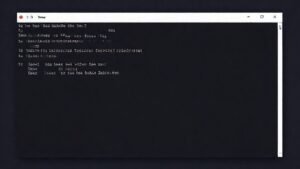Decoding Congressional Redistricting Efforts: What's at Stake?
- THE MAG POST

- Aug 11
- 11 min read

Congressional redistricting efforts are now a focal point in American politics. This process of redrawing district lines impacts representation and the balance of power. With both parties strategically maneuvering, understanding the implications becomes crucial. Democrats are responding to Republican tactics, highlighting the intense battle over fair representation. As this unfolds, it's essential to grasp the strategies and potential outcomes that shape our political landscape, ensuring an informed perspective on these congressional redistricting efforts.
The political landscape is heating up as Democrats respond to Republican congressional redistricting efforts in Texas with threats of similar actions in states where they hold power. This back-and-forth highlights the intense battle over shaping congressional districts and influencing future elections. As the redistricting drama unfolds, both parties are employing various strategies to gain an advantage, raising questions about fairness and representation. The implications of these actions could significantly impact the balance of power in Congress and the political direction of the nation, making it a crucial issue to watch.
Understanding Congressional Redistricting Efforts
Congressional redistricting efforts are a critical aspect of American politics, influencing the composition of the House of Representatives and the balance of power between parties. The process, which occurs every ten years following the census, involves redrawing the boundaries of congressional districts to reflect population changes. This task is often undertaken by state legislatures, leading to partisan battles over how district lines are drawn. The goal is to ensure equal representation, but the reality often involves strategic maneuvering to favor one party over another. The current debate over congressional redistricting efforts underscores the high stakes involved and the potential for significant political consequences.
The Republican congressional redistricting efforts in Texas have sparked considerable controversy, with Democrats accusing the GOP of attempting to gerrymander the state to gain an unfair advantage. Gerrymandering, the practice of drawing district lines to favor one party, can effectively disenfranchise voters and create safe seats for incumbents. The Texas plan, which aims to flip multiple U.S. House seats into the Republican column, has been met with strong opposition from Democrats, who see it as a threat to their party's prospects in future elections. This contentious issue highlights the ongoing struggle for political power and the lengths to which parties will go to secure it through congressional redistricting efforts.
In response to the Republican congressional redistricting efforts, Democrats are considering similar tactics in states where they control the legislature. Proposals to redraw maps in states like New York and California are seen as a necessary countermeasure to protect their interests and maintain a competitive balance. This tit-for-tat approach reflects the highly partisan nature of redistricting and the willingness of both parties to engage in strategic maneuvering. The potential for Democrats to redraw district lines in their favor underscores the importance of state-level politics and the impact of local decisions on national outcomes through congressional redistricting efforts.
The debate over congressional redistricting efforts also raises broader questions about fairness and representation in American democracy. Critics argue that gerrymandering undermines the principle of one person, one vote and distorts the will of the electorate. When district lines are drawn to favor one party, it can lead to a lack of accountability and responsiveness from elected officials. The current controversy highlights the need for reforms to the redistricting process, such as independent commissions, to ensure that district lines are drawn fairly and impartially. These reforms could help to restore public trust in the electoral system and promote more competitive and representative elections through congressional redistricting efforts.
The actions taken by both parties in response to congressional redistricting efforts have significant implications for the future of American politics. The outcome of these battles will shape the composition of the House of Representatives and influence the balance of power in Congress. The decisions made in the coming months will have lasting effects on the political landscape and the ability of voters to elect representatives who truly reflect their interests. As the redistricting process unfolds, it is crucial for citizens to stay informed and engaged to ensure that their voices are heard and that the principles of fairness and representation are upheld in congressional redistricting efforts.
The Impact of Partisan Congressional Redistricting Efforts
Partisan congressional redistricting efforts can have a profound impact on the political landscape, shaping the composition of legislative bodies and influencing the balance of power between parties. When district lines are drawn with the primary goal of favoring one party over another, it can lead to skewed electoral outcomes and a lack of competitive races. This can result in a less representative government, where the interests of certain groups are prioritized over others. The consequences of partisan congressional redistricting efforts extend beyond individual elections, affecting the overall health and vitality of the democratic process.
One of the most significant impacts of partisan congressional redistricting efforts is the creation of safe seats for incumbents. When district lines are drawn to include a majority of voters from one party, it becomes exceedingly difficult for challengers from the opposing party to win. This lack of competition can lead to complacency among elected officials, reducing their incentive to be responsive to the needs of their constituents. The entrenchment of incumbents through partisan congressional redistricting efforts can also stifle new ideas and perspectives, hindering the ability of government to address pressing challenges effectively.
Partisan congressional redistricting efforts can also exacerbate political polarization. When district lines are drawn to create homogenous districts, where voters share similar political views, it can lead to a reinforcement of existing biases and a lack of exposure to diverse perspectives. This can make it more difficult for elected officials to find common ground and work together on bipartisan solutions. The increasing polarization resulting from partisan congressional redistricting efforts can further divide society and undermine the ability of government to function effectively. It is important to recognize that these congressional redistricting efforts can have serious consequences.
The use of sophisticated data and technology has made partisan congressional redistricting efforts more precise and effective than ever before. With access to detailed voter information, political strategists can draw district lines that maximize their party's advantage, even down to the level of individual households. This level of precision raises ethical concerns about the fairness of the redistricting process and the extent to which it should be driven by partisan considerations. The increasing sophistication of partisan congressional redistricting efforts underscores the need for greater transparency and accountability in the process.
Addressing the negative impacts of partisan congressional redistricting efforts requires a multifaceted approach. One potential solution is to establish independent commissions to draw district lines, removing the process from the hands of partisan politicians. These commissions could be composed of individuals with diverse backgrounds and expertise, tasked with drawing district lines that are fair, compact, and respect community boundaries. Another approach is to implement stricter standards for redistricting, such as requiring that districts be contiguous and that they do not unduly favor one party over another. By implementing these reforms, it may be possible to mitigate the harmful effects of partisan congressional redistricting efforts and promote a more representative and accountable government.
Strategies to Counter Congressional Redistricting Efforts
In the face of aggressive congressional redistricting efforts, particularly those aimed at partisan advantage, various strategies can be employed to counter their effects and promote fairer representation. These strategies range from legal challenges to grassroots activism and aim to ensure that the redistricting process is transparent, equitable, and respects the rights of voters. By employing a combination of these approaches, it is possible to mitigate the negative impacts of partisan congressional redistricting efforts and safeguard the integrity of the democratic process.
One of the most effective strategies to counter congressional redistricting efforts is to pursue legal challenges in the courts. When district lines are drawn in a way that violates constitutional principles, such as equal protection or voting rights, legal action can be taken to challenge the validity of the maps. These challenges often focus on claims of gerrymandering, where district lines are drawn to unfairly favor one party or dilute the voting power of minority groups. Successful legal challenges can result in court-ordered redistricting, leading to fairer and more representative maps. Legal challenges to congressional redistricting efforts are a critical tool for protecting voting rights and ensuring fair elections.
Grassroots activism and public awareness campaigns can also play a significant role in countering congressional redistricting efforts. By educating voters about the redistricting process and the potential impacts of gerrymandering, it is possible to mobilize public support for fairer maps. Grassroots organizations can organize protests, lobby elected officials, and advocate for independent redistricting commissions. These efforts can help to raise awareness of the issue and put pressure on policymakers to adopt more equitable redistricting practices. Grassroots activism is essential for creating a more informed and engaged electorate, which is crucial for countering congressional redistricting efforts.
Another strategy to counter congressional redistricting efforts is to advocate for independent redistricting commissions. These commissions, composed of individuals with diverse backgrounds and expertise, are tasked with drawing district lines that are fair, compact, and respect community boundaries. By removing the redistricting process from the hands of partisan politicians, independent commissions can help to ensure that district lines are drawn in a non-partisan manner. Several states have already adopted independent redistricting commissions, and the results have generally been positive, leading to more competitive elections and more representative government. Advocating for independent redistricting commissions is a key step towards reforming the redistricting process and countering congressional redistricting efforts.
In addition to legal challenges, grassroots activism, and independent commissions, it is also important to promote greater transparency in the redistricting process. This includes making redistricting data and maps publicly available, holding public hearings to gather input from voters, and ensuring that the process is open and accessible to all. Transparency can help to build trust in the redistricting process and make it more difficult for partisan actors to manipulate district lines for their own advantage. By promoting greater transparency, it is possible to create a more accountable and equitable redistricting process, which is essential for countering congressional redistricting efforts.
Ultimately, countering congressional redistricting efforts requires a sustained and coordinated effort from a variety of stakeholders, including legal advocates, grassroots organizations, policymakers, and engaged citizens. By employing a combination of legal challenges, grassroots activism, independent commissions, and transparency measures, it is possible to mitigate the negative impacts of partisan redistricting and promote fairer representation. The fight for fair redistricting is an ongoing one, but by working together, it is possible to safeguard the integrity of the democratic process and ensure that all voters have an equal voice in their government. The future of American democracy depends on our collective commitment to countering congressional redistricting efforts.
The Role of Technology in Congressional Redistricting Efforts
Technology plays an increasingly significant role in congressional redistricting efforts, influencing how district lines are drawn, analyzed, and challenged. The availability of sophisticated mapping software, data analytics tools, and communication platforms has transformed the redistricting process, making it more precise, efficient, and accessible. However, technology also presents new challenges, such as the potential for misuse of data and the amplification of partisan biases. Understanding the role of technology in congressional redistricting efforts is crucial for ensuring that the process is fair, transparent, and accountable.
One of the most significant ways that technology has impacted congressional redistricting efforts is through the use of Geographic Information Systems (GIS) software. GIS software allows mapmakers to create and analyze district maps with unprecedented precision, taking into account a wide range of factors such as population density, demographics, and voting patterns. This technology enables mapmakers to draw district lines that are highly tailored to achieve specific political goals, such as maximizing partisan advantage or protecting incumbents. The use of GIS software has made the redistricting process more sophisticated and strategic, but it also raises concerns about the potential for manipulation and gerrymandering in congressional redistricting efforts.
Data analytics tools also play a crucial role in congressional redistricting efforts. By analyzing voter data, demographic trends, and election results, political strategists can identify patterns and insights that inform their redistricting decisions. These tools can be used to predict how different district maps will affect the outcome of elections and to identify areas where a party can gain an advantage. The use of data analytics in congressional redistricting efforts has become increasingly sophisticated, allowing political actors to make more informed and strategic decisions. However, it also raises concerns about the potential for data to be used to discriminate against certain groups or to suppress voter turnout.
Technology has also transformed the way that congressional redistricting efforts are communicated to the public. Online mapping tools and interactive websites allow voters to explore proposed district maps, provide feedback, and participate in the redistricting process. Social media platforms can be used to raise awareness of redistricting issues, mobilize public support for fairer maps, and hold elected officials accountable. The use of technology has made the redistricting process more transparent and accessible, empowering voters to play a more active role in shaping their electoral districts. These congressional redistricting efforts are important for all citizens.
Despite the many benefits of technology in congressional redistricting efforts, it is important to be aware of the potential risks and challenges. The misuse of data, the amplification of partisan biases, and the lack of transparency can all undermine the fairness and integrity of the redistricting process. To mitigate these risks, it is essential to implement safeguards such as data privacy protections, independent oversight, and public participation requirements. By ensuring that technology is used responsibly and ethically, it is possible to harness its power to promote fairer and more representative congressional redistricting efforts.
The Future of Congressional Redistricting Efforts
The future of congressional redistricting efforts is likely to be shaped by a combination of legal challenges, technological advancements, and political reforms. As partisan polarization continues to intensify, the battle over redistricting is expected to become even more contentious, with both parties employing increasingly sophisticated strategies to gain an advantage. However, there is also growing momentum for reforms that would promote fairer and more transparent redistricting processes, such as independent commissions and stricter standards for drawing district lines. The outcome of these battles will have a profound impact on the future of American democracy and the ability of voters to elect representatives who truly reflect their interests in congressional redistricting efforts.
One of the key factors that will shape the future of congressional redistricting efforts is the role of the courts. Legal challenges to gerrymandered maps are likely to continue, with the potential for landmark Supreme Court decisions that could set new standards for redistricting. The courts may also be called upon to address emerging issues such as the use of data analytics and artificial intelligence in redistricting, which raise new questions about fairness and discrimination. The legal landscape surrounding congressional redistricting efforts is constantly evolving, and the courts will play a critical role in shaping its future.
Technological advancements are also expected to have a significant impact on congressional redistricting efforts. As mapping software and data analytics tools become more sophisticated, political strategists will be able to draw district lines with even greater precision and target specific groups of voters. This could lead to more extreme forms of gerrymandering, making it even more difficult for challengers to unseat incumbents. However, technology can also be used to promote fairer redistricting processes, such as by creating open-source mapping tools that allow citizens to draw their own district maps and compare them to those proposed by politicians. The future of congressional redistricting efforts will depend on how technology is used and whether it is harnessed for partisan gain or for the benefit of the public.
Political reforms are also essential for shaping the future of congressional redistricting efforts. Independent redistricting commissions, which remove the process from the hands of partisan politicians, have the potential to create fairer and more competitive elections. Stricter standards for drawing district lines, such as requiring that districts be contiguous and that they respect community boundaries, can also help to prevent gerrymandering. By implementing these reforms, it is possible to create a more level playing field for candidates and to ensure that all voters have an equal voice in their government in congressional redistricting efforts.
Ultimately, the future of congressional redistricting efforts will depend on the choices that we make as a society. Do we want to continue down the path of partisan gerrymandering, where district lines are drawn to protect incumbents and maximize partisan advantage? Or do we want to embrace reforms that promote fairer and more transparent redistricting processes, where all voters have an equal opportunity to elect representatives who truly reflect their interests? The answer to this question will determine the future of American democracy and the ability of our government to address the challenges facing our nation through congressional redistricting efforts.
From our network :






















































Comments